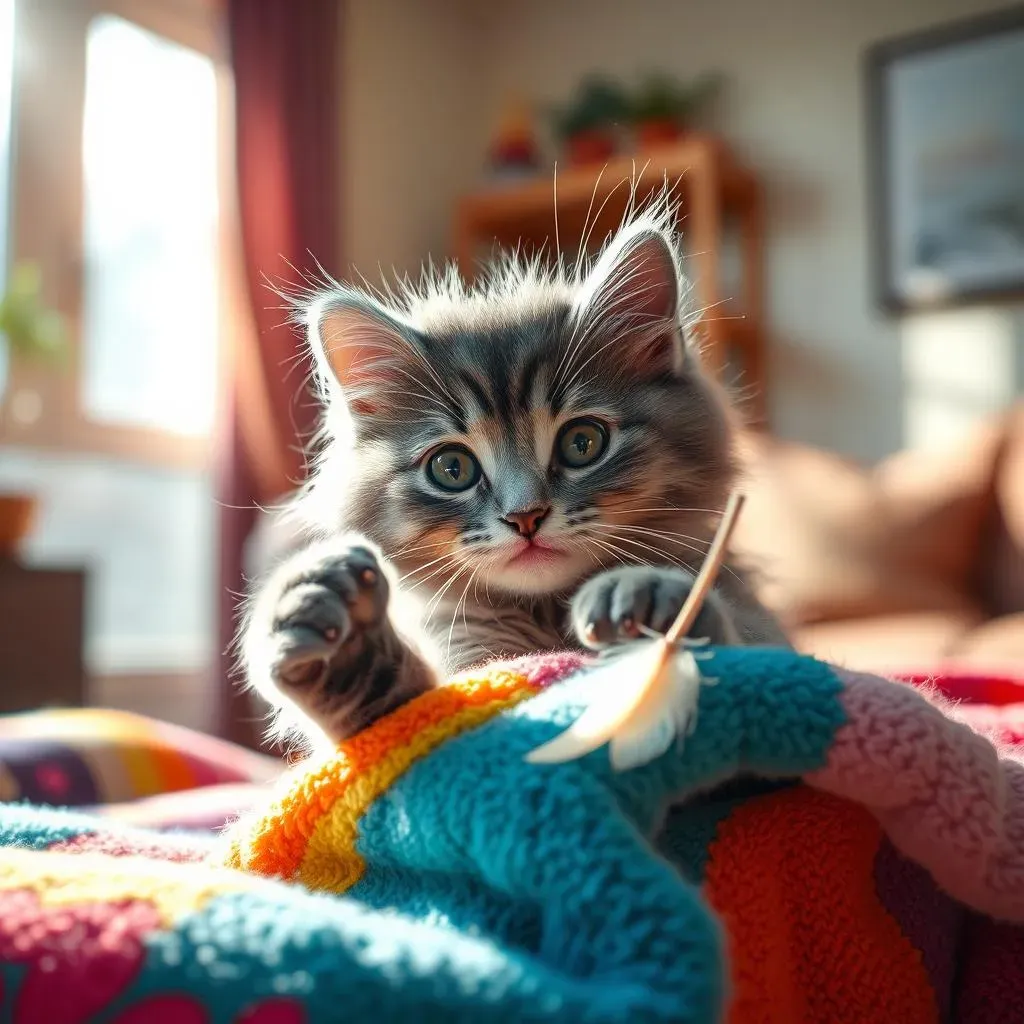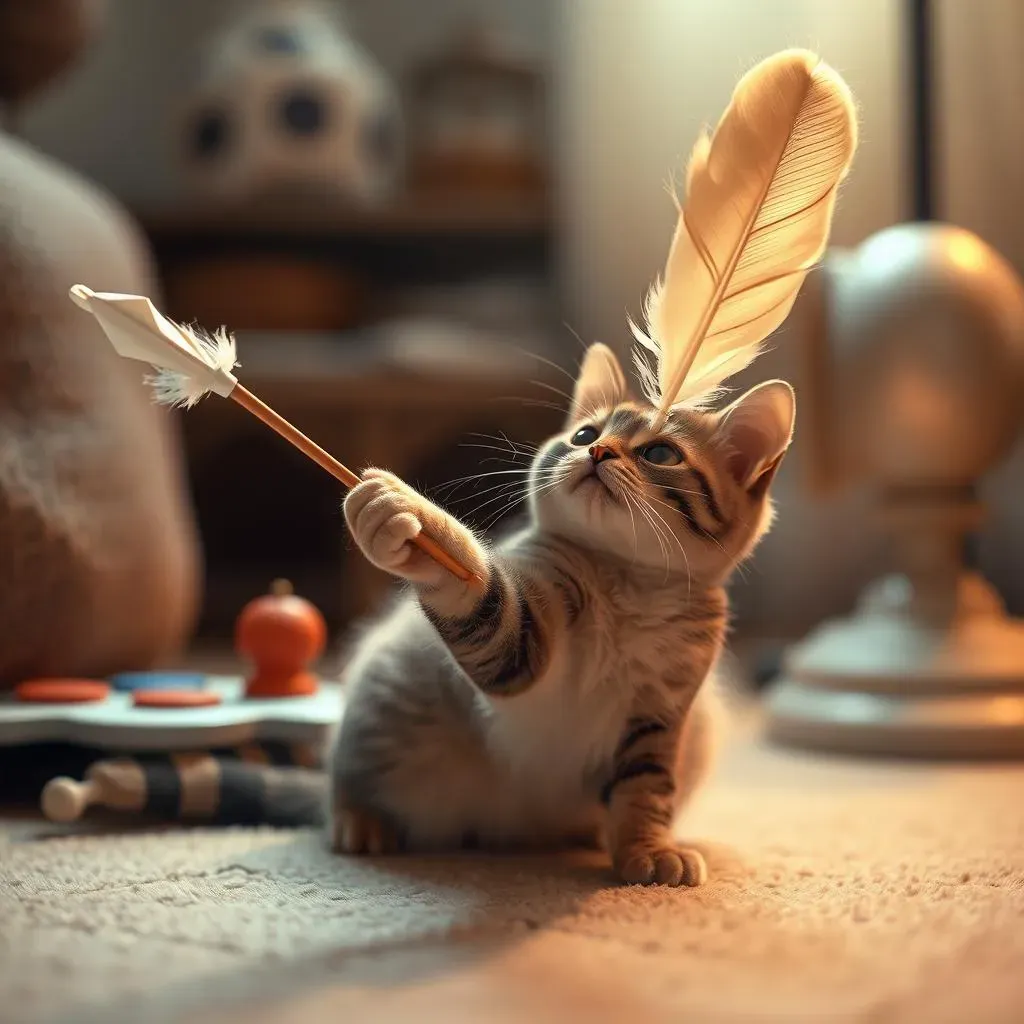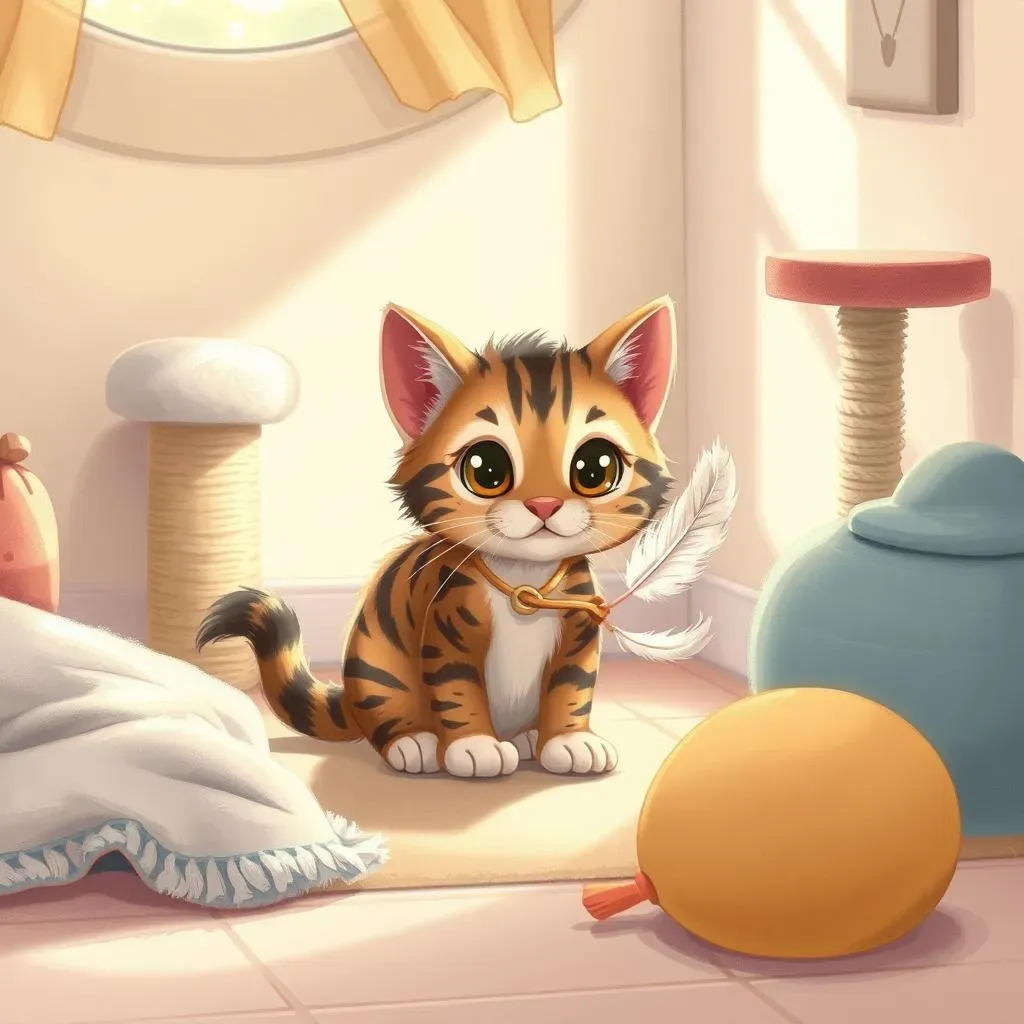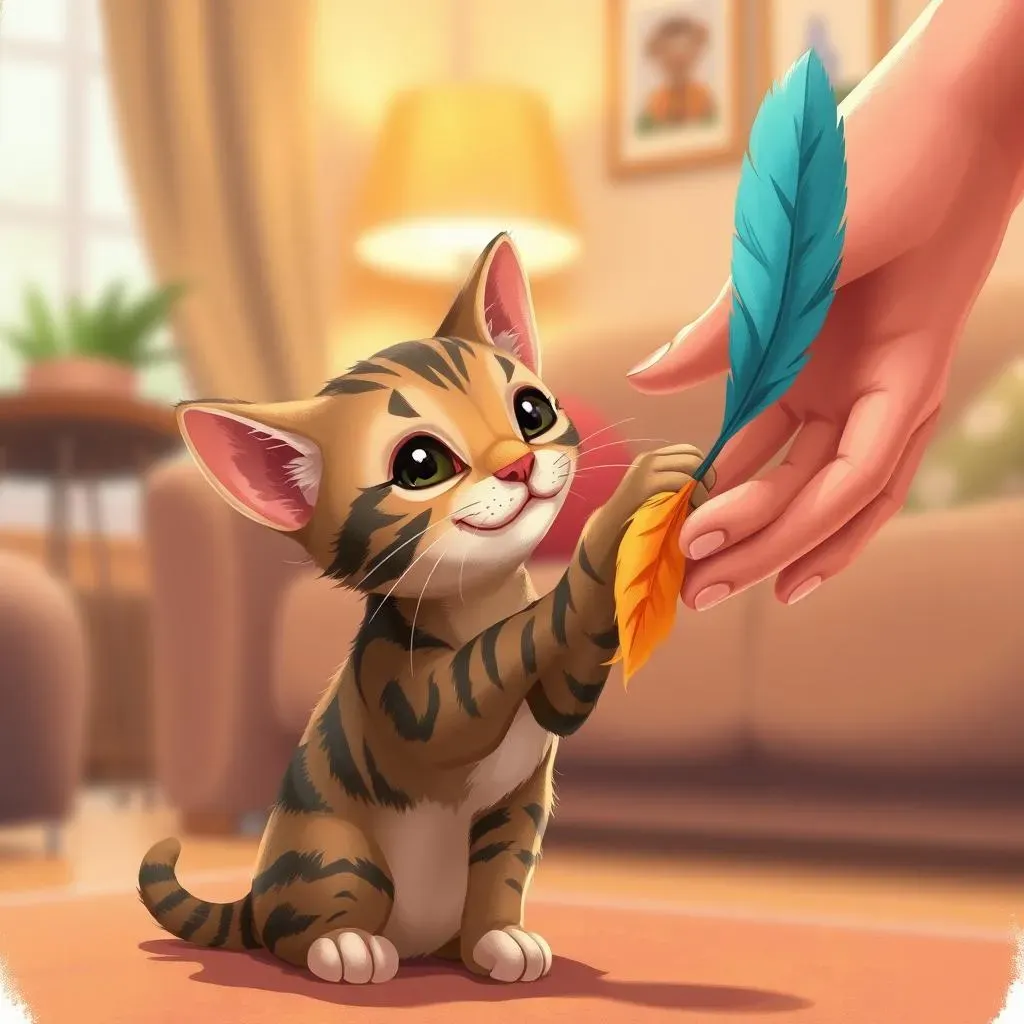Table of Contents
Does your feline friend shy away from playtime? Many cats, especially those with timid personalities, need a little encouragement to unleash their inner kitten. The secret? Finding the best cat toys for shy cats. These aren't just any toys; they're tools to build confidence, encourage activity, and strengthen your bond. This article dives into understanding why play is crucial for shy cats, exploring a variety of toy options designed to entice even the most hesitant felines, and offering strategies for creating a safe and engaging play environment. We'll cover everything from interactive wands and catnip-infused delights to puzzle feeders and solo-play options. Discover how to invite your cat to play, understand unusual toy behaviors, and ultimately, enrich their life through the power of play. Get ready to transform your shy kitty into a confident and playful companion with the purr-fect selection of toys!
Understanding Shy Cats: Why Play Matters

Understanding Shy Cats: Why Play Matters
Why does playtime matter so much for shy cats? Well, it's about more than just fun and games; it's about building confidence and trust. Shy cats often have heightened anxiety and can be easily overwhelmed by their environment. Play provides a safe and controlled way for them to explore their instincts, engage with their surroundings, and interact with you. It's a form of enrichment that alleviates boredom and reduces stress, which can manifest in unwanted behaviors like excessive grooming or hiding. Think of it as a gentle nudge out of their comfort zone, allowing them to discover their playful side at their own pace.
Ever seen a cat stalk a sunbeam or pounce on a dust bunny? That's their hunting instinct kicking in, and toys are a fantastic way to satisfy that urge without them needing to actually hunt. For shy cats, this is especially important because it gives them a sense of accomplishment and control. Plus, a good play session is excellent exercise, keeping them physically healthy and mentally sharp. It's like a workout and therapy session all rolled into one adorable package.
Benefit | Description |
|---|---|
Boosts Confidence | Provides a safe way to explore and succeed. |
Reduces Stress | Offers an outlet for pent-up energy and anxiety. |
Satisfies Hunting Instincts | Allows them to stalk, chase, and pounce in a controlled environment. |
Strengthens Bond | Creates positive interactions and builds trust with their human. |
Provides Exercise | Keeps them physically healthy and mentally stimulated. |
Top Toys to Entice Timid Felines: Wand Toys, Catnip, and More

Top Toys to Entice Timid Felines: Wand Toys, Catnip, and More
Wand Toys: The Interactive Invitation
Wand toys are like magic wands for shy cats. The key is to use them gently and patiently. Start by simply letting the wand lie on the floor near your cat, allowing them to investigate it at their own pace. Avoid sudden movements or aggressive waving, which can be scary. Once they show some interest, slowly drag the wand along the floor, mimicking the movement of prey. The goal is to spark their curiosity without overwhelming them. Feather wands, in particular, are great because the soft, fluttering feathers are visually appealing and mimic the movement of birds, triggering their natural hunting instincts.
Remember, it's not about forcing them to play, it's about inviting them to engage. If they retreat, simply stop and try again later. Patience is key! Over time, they'll associate the wand with positive experiences and start to come out of their shell.
Catnip: The Natural Confidence Booster
Catnip is a game-changer for many cats, and it can be especially helpful for shy ones. It contains nepetalactone, a chemical that triggers a euphoric response in about 70% of cats. This can lead to increased playfulness, reduced anxiety, and an overall sense of well-being. Start with a small amount of catnip, either sprinkled on a toy or in a catnip-filled toy. Observe your cat's reaction – some cats become energetic and playful, while others become mellow and relaxed. Either way, it can help them feel more comfortable and confident in their environment.
Pro Tip: Not all cats react to catnip. If your cat doesn't seem interested, don't force it. There are other options available!
Solo Play Options: Building Independence
While interactive play is important, it's also crucial to provide shy cats with toys they can enjoy on their own. This allows them to engage in play without feeling pressured or overwhelmed. Soft plush toys, crinkle balls, and puzzle feeders are all excellent options. Puzzle feeders, in particular, are great because they combine play with mental stimulation. Your cat has to figure out how to get the treats, which can be a rewarding and confidence-boosting experience. Place these toys in areas where your cat feels safe and comfortable, such as near their favorite hiding spot or sleeping area. This encourages them to explore and play on their own terms, building their independence and self-assurance.
Ever noticed your cat batting around a toy mouse when they think no one's watching? That's them building their confidence, one pounce at a time.
Creating a Safe Play Environment for Your Shy Cat

Creating a Safe Play Environment for Your Shy Cat
Dedicated Play Zone
Shy cats thrive in predictable environments. Designate a specific area as their "play zone." This doesn't need to be an entire room; even a corner can work. The key is consistency. Ensure this space is always accessible and free from loud noises, sudden movements, or other potential stressors. Keep their toys in this area, so they associate it with positive experiences. Think of it as their personal playground, a sanctuary where they can feel safe and secure while exploring their playful side. Over time, they'll start to venture into this zone more frequently, knowing it's a safe space for fun.
I remember when I first adopted a skittish rescue cat, Luna. She spent weeks hiding under the bed. I created a little play area for her with a soft blanket, a few toys, and a scratching post. At first, she'd only peek out from under the bed, but slowly, she started venturing into the play zone when I wasn't around. Eventually, she started playing with the toys while I was in the room, and it was such a heartwarming breakthrough.
Gradual Introduction
Don't overwhelm your shy cat with too much, too soon. Introduce new toys and play activities gradually. Start by simply placing a new toy near their favorite resting spot and let them investigate it at their own pace. Avoid forcing them to interact with it. Once they seem comfortable, you can try gently tossing the toy a short distance away, encouraging them to chase it. The goal is to make the experience positive and non-threatening. If they retreat or seem stressed, back off and try again later. Patience is crucial. Remember, it's a marathon, not a sprint. With time and consistency, they'll become more comfortable and confident in their play.
Ever tried to befriend someone who's naturally reserved? You wouldn't bombard them with questions or demand their attention right away, would you? It's the same with shy cats. Let them warm up to you and their toys at their own speed.
Do | Don't |
|---|---|
Introduce new toys gradually. | Force interaction. |
Offer praise and encouragement. | Punish or scold. |
Create a predictable routine. | Make sudden loud noises. |
Provide a safe and comfortable space. | Overwhelm with too much at once. |
Minimize Stressors
Shy cats are easily stressed, so it's important to minimize potential triggers in their play environment. This includes loud noises, sudden movements, and the presence of strangers or other pets. Choose a quiet time of day for play, when the house is calm and peaceful. If you have other pets, make sure they're not interfering with the shy cat's playtime. A separate room or a barrier can help. Also, avoid making sudden movements or loud noises during play, as this can startle them. A calm and predictable environment will help them feel more secure and encourage them to engage in play.
Think of a shy cat as a delicate flower. They need a nurturing environment to blossom. By minimizing stressors, you're creating the perfect conditions for them to come out of their shell and embrace their playful side.
Interactive Play Strategies: Building Trust and Confidence with the Best Cat Toys

Interactive Play Strategies: Building Trust and Confidence with the Best Cat Toys
The Art of the Slow Approach
Interactive play is more than just dangling a toy in front of your cat. For shy cats, it's about building a connection and fostering trust. The key is to approach playtime with patience and understanding. Start by observing your cat's body language. Are their ears perked up, or are they flattened against their head? Are they relaxed, or are they tense? This will give you clues about their comfort level. Avoid approaching them directly or making sudden movements. Instead, try sitting nearby and gently tossing a toy in their direction. Let them come to you. If they show interest, reward them with praise and encouragement. The goal is to create a positive association with playtime, so they start to see it as a safe and enjoyable experience.
Think of it like learning a new language. You wouldn't expect to become fluent overnight, would you? It takes time, patience, and consistent effort. The same goes for building trust with a shy cat. Every positive interaction, no matter how small, is a step in the right direction.
Reading Your Cat's Body Language
Understanding your cat's body language is crucial for successful interactive play. A relaxed cat will have soft eyes, relaxed ears, and a loose posture. They may also rub against you or purr. A stressed cat, on the other hand, will have dilated pupils, flattened ears, and a tense posture. They may also hiss, swat, or try to hide. If you notice any signs of stress, immediately stop the play session and give them space. It's important to respect their boundaries and avoid pushing them too far, too fast. By paying attention to their body language, you can tailor your approach to their individual needs and create a more positive and enjoyable experience for both of you.
Ever been in a conversation where you could just tell the other person wasn't really listening? It's frustrating, right? Cats feel the same way! Pay attention to what they're telling you with their body language, and you'll be amazed at how much better your interactions become.
Body Language | Meaning | Action |
|---|---|---|
Soft eyes, relaxed ears | Relaxed and comfortable | Continue play |
Dilated pupils, flattened ears | Stressed or scared | Stop play immediately |
Rubbing against you | Seeking attention | Offer gentle petting |
Hissing or swatting | Feeling threatened | Give space and time to calm down |
The Power of Positive Reinforcement
Positive reinforcement is a powerful tool for encouraging play and building confidence in shy cats. This involves rewarding them for positive behaviors, such as approaching a toy or engaging in play. Rewards can include praise, gentle petting, or a small treat. Avoid using punishment or scolding, as this can create fear and anxiety. The goal is to make playtime a positive and rewarding experience, so they're more likely to participate in the future. For example, if your cat tentatively sniffs a new toy, offer them a soft "Good kitty!" and a gentle scratch behind the ears. If they chase after a toy, give them a small treat. Over time, they'll associate these positive rewards with play, making them more confident and willing to engage.
Remember that time you aced a test after studying hard, and your teacher praised you in front of the class? That feeling of accomplishment and pride? That's the same thing positive reinforcement does for cats! It makes them feel good about themselves and encourages them to repeat the behavior.
Unlocking Playtime Confidence: The Lasting Impact of the Best Cat Toys for Shy Cats
Investing in the best cat toys for shy cats is more than just buying a product; it's an investment in their overall well-being. Play is a vital component of a cat's physical and mental health, and for shy cats, it's an essential tool for building confidence and strengthening the bond with their human companions. By understanding your cat's individual preferences, creating a safe and inviting play environment, and utilizing interactive play strategies, you can transform a timid feline into a playful and happy member of the family. So, go ahead, experiment with different toys, observe your cat's reactions, and celebrate every little victory along the way. The joy and companionship you'll receive in return will be immeasurable.